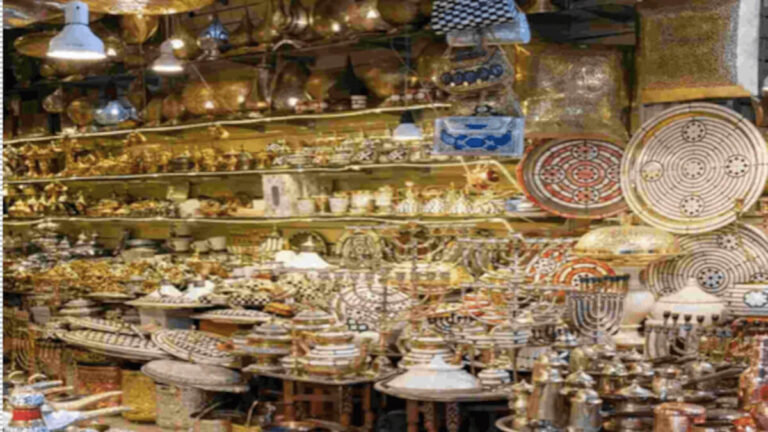Morocco Economic Review Economic Growth Forecasts for 2024 Inflation and Employment Government Policies and Budget Management Investment Environment Potential Risks and Challenges for 2025 Implications for Investors
Over the past few decades, the North African giant has built a resilient and growing economy that exceeds many expectations. Widely considered Africa’s gateway to Europe, Morocco’s location has obvious advantages, but the country’s leaders have taken major steps to usher in its recovery and growth. As 2025 approaches, it is important to understand the factors driving Morocco’s development and how those factors will shape 2025 for investors.
Morocco Economic Review 2024
The Moroccan economy has shown remarkable resilience in the face of global headwinds and domestic challenges, such as the current drought and the 2023 earthquake, with the Moroccan dirham (MAD) expected to grow in 2024, according to TradingView data. It appreciated by 0.31% against the US dollar in 2019. Steady GDP growth over the past decade. Morocco’s economy relies primarily on agriculture, tourism services, and automobile manufacturing.
Morocco is planning a broad recovery in 2024, especially in the agricultural sector, as the High Commission for Planning (HCP) forecasts GDP growth of 3.2% in 2024, which remains It’s slumping. Automobiles also affected Morocco’s automobile industry, creating uncertainty.
However, Morocco is benefiting from a stable macroeconomy and its fiscal deficit is gradually decreasing. Lower food prices, lower inflation and strong FDI flows have contributed to the country’s resilience, but high youth unemployment (though gradually improving) and low wages remain severe. .
economic growth forecast
Morocco’s Minister of Economy and Finance forecasts strong growth of 4.6%, based on the recovery of key sectors such as agriculture, tourism and manufacturing. The African Development Bank and the Organization for Economic Cooperation and Development (OECD) have more modest forecasts, while the International Monetary Fund (IMF) projects GDP growth of 3.8%, 3.5%, and 3.3%, respectively, between now and 2025. I am.
Factors influencing the growth of Morocco’s economy are the recovery of agriculture, the global economic situation, and government initiatives. A recovery in the agricultural sector will boost GDP after the bad weather. At the same time, the interaction of commodity prices, trade relations, and other aspects of international markets will affect economic stability in 2025.
The Moroccan government’s investments in critical human and social infrastructure to drive development will stimulate growth, combat domestic challenges and attract more foreign investment. Their goal is to ensure a stable and bright future for their country.
inflation and employment
Morocco’s inflation rate is relatively stable and is expected to reach 2% and 2.5% in 2025. A low, controlled rate of inflation is essential to maintain consumer purchasing power and promote price stability, a key element of an investment-friendly environment.
As the economy continues to recover, the high unemployment rate in 2024 is expected to fall to around 11.5% in 2025. This reduction will increase consumer purchasing power and make the economy more attractive to investors. The modest improvement in employment reflects continued action to strengthen economic resilience through job creation.
Government policy and budget management
The Moroccan government will also take steps to reduce the budget deficit and manage public debt, given that external debt accounts for 70% of GDP. HCP forecasts that the fiscal deficit will reach 3.8% of GDP in 2025, up from 4% in 2024. The government has taken some development loans in 2024 to stimulate economic growth and is expected to raise more money for the 2025 budget. -The GDP ratio is expected to decline to around 6% by the end of 2027 as Morocco strives to achieve fiscal sustainability.
The government will also address the investment and structural reforms contained in the Finance Bill 2025, which will strengthen social safety nets, improve investment and job creation, advance structural reforms and ensure fiscal sustainability. The plan is to address four main goals:
Morocco will allocate $34.4 billion (approximately AED 340 billion) for public works in 2025, particularly in rural areas affected by large-scale disasters: transport, energy, telecommunications, housing, agriculture, access to drinking water, The money will be allocated to various fields such as social work. Drought.
investment environment
Over the years, Morocco has established itself as one of Africa’s leading investment destinations, with a significant increase in green investments. France, the United Arab Emirates, Spain, Switzerland, and the United States are the main investment partner countries facilitating FDI to Morocco.
Infrastructure and agriculture will continue to be key investment areas in 2024, with improvements to road and rail networks, expansion of renewable energy sources, and modernization of digital infrastructure to support economic growth. Investments in irrigation systems and agricultural innovations will improve water management, modernize agricultural practices, and foster growth in the agricultural sector.
Government efforts to declare tax incentives for new industries, free zones, and investment charters providing for exemption from value added tax and corporate tax under certain conditions will attract more investors in 2025 Probably. By diversifying its economy and promoting infrastructure development, Morocco will be ready for investment and growth from 2025 onwards.
Potential risks and challenges in 2025
Geopolitical tensions in the Middle East are likely to affect the global economy, particularly oil and gas prices, and will also spill over into Morocco’s economy. Domestic challenges, particularly climate change vulnerability, may also weigh on investor sentiment. However, the government is taking steps to reduce investment risks and keep the economy attractive for investors beyond 2025.
What it means for investors
Projected growth rates reflect cautious optimism, so stakeholders and investors should monitor key fundamental indicators to make sustainable and strategic investments as Morocco’s economic growth evolves. can be found. Reducing debt, increasing employment rates and wages, and increasing investment in human and social infrastructure will increase Morocco’s investment attractiveness and attract more domestic and international investors. Foreign investors will find a resilient population supported by a government that strives for economic self-sufficiency.


